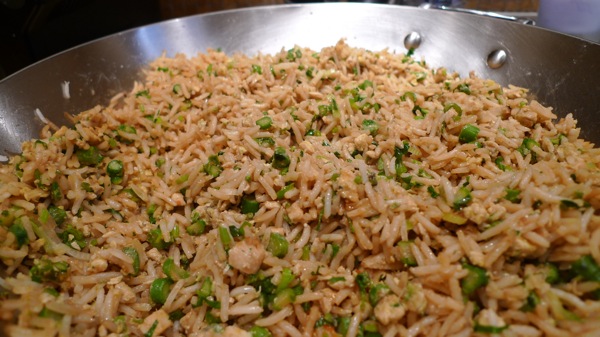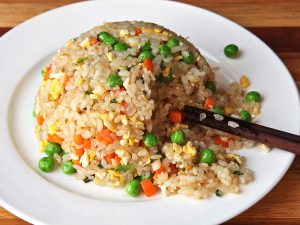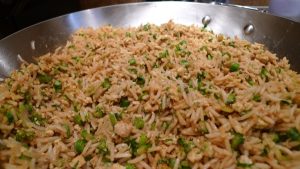Rice is a dietary staple enjoyed by people worldwide, but not everyone is aware of the potential food safety risks associated with reheating rice dishes. In this comprehensive article, we will explore the role of bacteria in reheated rice, how mishandling can lead to bacterial growth, the potential health risks, and effective prevention strategies. By
Rice is a dietary staple enjoyed by people worldwide, but not everyone is aware of the potential food safety risks associated with reheating rice dishes. In this comprehensive article, we will explore the role of bacteria in reheated rice, how mishandling can lead to bacterial growth, the potential health risks, and effective prevention strategies. By increasing food safety awareness, you can enjoy your rice dishes without the worry of bacterial contamination.
Understanding Bacterial Growth in Rice: The Basics
- Bacterial Growth and Rice: Rice is an excellent source of carbohydrates, making it an ideal medium for bacterial growth when not handled properly. Bacteria, particularly Bacillus cereus, can multiply rapidly in the moist and starchy environment of cooked rice.
- Bacillus cereus Toxins: Bacillus cereus is a bacterium known for its ability to produce heat-resistant toxins. These toxins can survive the cooking process, especially when rice is not stored or reheated correctly.
The Risks of Reheating Rice:
- Bacillus cereus and Toxins: When rice is not handled or reheated properly, Bacillus cereus spores can germinate, producing toxins that can lead to food poisoning. These toxins are known for causing symptoms such as nausea, vomiting, diarrhea, and abdominal pain.
Image By: https://th.bing.com
Prevention Strategies: Safe Handling and Reheating Practices
1. Proper Storage:
- Prompt Refrigeration: Refrigerate cooked rice promptly, within two hours of preparation, to prevent bacterial growth. The faster it cools, the lower the risk.
- Shallow Containers: Store rice in shallow containers in the refrigerator. This allows the rice to cool evenly and quickly, reducing the time spent in the temperature danger zone where bacteria multiply.
- Proper Refrigeration: Maintain your refrigerator at 40°F (4°C) or lower to inhibit bacterial growth.
- Prompt Consumption: Consume reheated rice dishes within 1-2 days of cooking for the best food safety. If not possible, consider freezing for later use.
2. Safe Reheating Practices:
- Thorough Reheating: Reheat rice dishes to at least 165°F (74°C) to eliminate potential bacteria and spores.
- Microwave or Stovetop: Rice dishes can be safely reheated using either a microwave or stovetop. In both cases, ensure the dish reaches the recommended temperature.
- Microwave Technique: For microwave reheating, distribute the dish evenly on a microwave-safe plate and cover it with a microwave-safe lid or plastic wrap, leaving a small vent for steam to escape.
- Stovetop Technique: When reheating on the stovetop, consider adding a small amount of water or broth to prevent the dish from drying out.
- Single Reheat: Avoid reheating rice dishes multiple times, as this increases the risk of bacterial contamination. Reheat only the portion you plan to consume.
3. General Food Safety Practices:
- Hunger Awareness: Consume reheated rice dishes when you’re genuinely hungry. Avoid eating dishes that have been sitting at room temperature for too long.
- Room Temperature: Do not leave cooked rice dishes at room temperature for extended periods, as it creates an environment conducive to bacterial growth.
- Refrigerate Cooked Rice Dishes: Excess cooked rice dishes should be refrigerated immediately rather than left at room temperature. Refrigerated dishes can be used in various recipes.
- Meal Preparation: Ensure that rice dishes are cooked thoroughly during meal preparation. Proper cooking kills most harmful bacteria, ensuring the dishes are safe to eat.
- Food Handling Hygiene: Practice good food handling hygiene by washing your hands, utensils, and surfaces before and after dealing with rice dishes.
- Food Journal: Keep a food journal or use a mobile app to track your meals and portion sizes. This can increase your awareness of your eating habits, including rice consumption.
Image By: https://th.bing.com
Balancing Convenience and Safety:
While rice dishes can be convenient and delicious additions to your meals, it’s crucial to balance that convenience with food safety. By following the guidelines provided in this article and understanding the potential risks associated with reheated rice, you can enjoy this versatile grain without compromising your health. With proper storage, reheating, and food handling, rice dishes can remain a delightful and safe component of your meals.



















Leave a Comment
Your email address will not be published. Required fields are marked with *